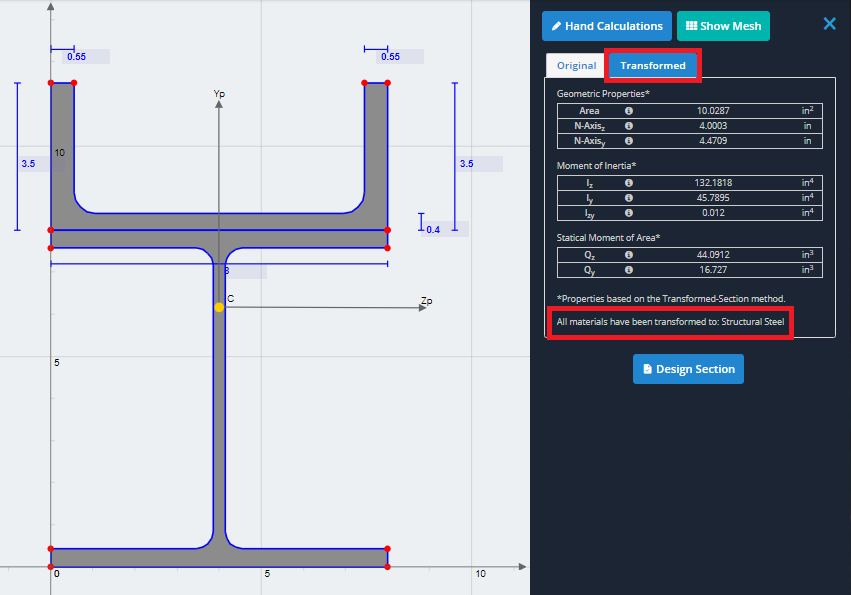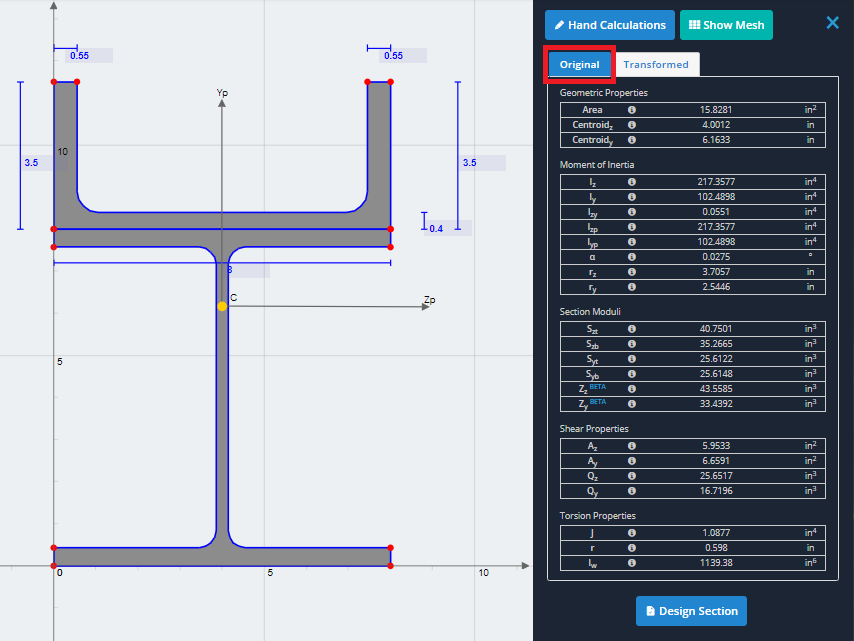An important concept to understand is that the section properties are all geometric. That is to say that to calculate them, you do not need to consider any material properties and are hence independent of them.
However one important difference that introducing different materials causes is the movement of the neutral axis from the centroid. Whereas the centroid is purely geometric, the neutral axis is not. When a section is of a uniform material, the neutral axis passes through the centroid. This is not the case with a section comprising different materials. Due to this important difference, the moment of inertia values (for bending) and static moment of area values (for shear) need to be adjusted in order to be used by the flexure and shear formulas respectively.
The secondary purpose of the Section Builder is to feed results into SkyCiv Beam and SkyCiv S3D so that results for deflection and stress can be determined. With composite sections, the transformed moment of inertia values and static moment of area values are sent across. Torsion values however are not adjusted, and the original/standard torsion values are sent across. Di conseguenza, it should be noted that torsion results for members with composite sections may not be accurate.
Esempio: Compare Standard and Composite Results
The results here continue from the section built in the Composite Sections section. Come ripasso, il canale è realizzato in cemento, e la trave a I è realizzata in acciaio strutturale. Dopo "Calcola".’ è stato cliccato, i risultati verranno visualizzati a destra. Si noti che sono presenti due schede per i risultati; 'Originale’ and ‘Transformed’.
The results within the ‘Transformed’ la scheda ti fornirà i risultati compositi. Tieni presente che il canale, che era fatto di cemento, has been transformed into structural steel because structural steel has a higher Young’s modulus.
Clicking the ‘Original’ tab will give you the Standard Results which ignore material differences. This assumes that the neutral axis intersects the centroid. If you compare the results, you will notice that the neutral axis location differs from the centroid. Properties for torsion are not calculated for the transformed section.


